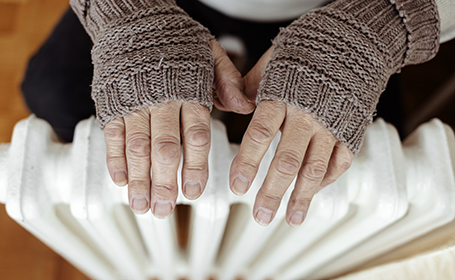
Does the weather affect arthritis?
It’s a common belief that changes in the weather can lead to arthritis flare-ups, but is there any truth behind it? Professor Raj Sengupta, consultant rheumatologist at Bath Clinic, explores the science.
And yet, there is no conclusive evidence that the weather has any effect on arthritis at all.
This is not to say that there is no link. After all, the overwhelming volume of anecdotal evidence should be enough by itself to give some credence to the link. Not to mention various scientific studies that have suggested a tangible link between changes in the weather and people's experience of pain and other symptoms. Rather, researchers have yet to reach a consensus as to exactly how and why changes in the weather - such as atmospheric or barometric changes - can affect people living with arthritis.
We asked Prof Raj Sengupta, a consultant rheumatologist who regularly sees patients living with arthritis and related conditions, to take a look at the available data for us and see if he could reach any conclusions about the weather's affect on arthritis.
There's still no definitive evidence that the link between weather and arthritis pain exists.

Professor Raj Sengupta considers the data
The impact of the weather on the symptoms of arthritis has been debated for many years.
As a rheumatologist, patients with many different forms of arthritis come to me and say their symptoms are always worse in the damp and cold, or even that they can tell when the weather is about to change by the way their joints feel.
Beyond damp and cold weather, patients also report that changes in barometric pressure seem to coincide with worsening of the pain and stiffness in their joints.
If you suffer from joint pain, these complaints might sound familiar. Yet despite how common they are, there's still no definitive evidence that the link between weather and arthritis pain exists.
What does the evidence say?
Many studies have considered the link between the weather and arthritis, yet the results tend to be inconclusive or even conflicting.
If you take a look at the studies below, you'll see why we as doctors find it difficult to give a definitive yes or no answer.
The effects of humidity and barometric pressure
One two-year study looked at the effect of the weather on 222 patients with hip osteoarthritis. Researchers found that higher humidity levels were associated with more pain and that higher barometric pressures were associated with worse function. The severity of the osteoarthritis, however, was not affected.
Another study, this time on 810 patients with osteoarthritis of the hips and knees, also found that there was a significant association between daily average humidity and temperature and changes in joint pain. The effect of humidity was found to be more pronounced during periods of colder weather.
In contrast, studies looking at osteoarthritis of the spine did not find such a link. For example, a large Australian study with 1,604 patients showed no effect of the weather on the severity of back pain experienced by these patients.
Cold weather and joint pain
In one study, which looked at 245 patients with rheumatoid arthritis, it was found that older patients were more likely to report flare-ups during the colder weather.
However, a more extensive analysis of nine studies in patients with rheumatoid arthritis failed to identify a link between the weather and pain.
Cloudy with a chance of pain
The quest to define (or disprove) the link between arthritis and the weather continues, with researchers adopting more novel approaches that embrace modern technology.
The first smartphone-based study to investigate the relationship between weather and chronic pain, otherwise known as 'Cloudy with a chance of pain', ran between January 2016 and April 2017. During this time it collected 5 million pieces of data on symptoms, however the findings are yet to be reported.
Another smartphone-based study that has released findings looked at the location-based weather parameters of 1,334 participants in the US. Any significant links between pain symptoms and the weather were very weak in this study.
Regular exercise is one of the best ways to ease arthritic symptoms and provides the extra benefit of increasing your body temperature (as well as strengthening the muscles around your joints).
What if the weather really does affect my arthritis?
If you still feel like certain weather conditions or changes in the weather are affecting the symptoms of your arthritis, there are things you can try to ease the pain.
For example, many of my patients find it helps to keep as warm as possible. Simple painkillers such as paracetamol taken regularly often help too.
Regular exercise is one of the best ways to ease arthritic symptoms and provides the extra benefit of increasing your body temperature (as well as strengthening the muscles around your joints).
Read our top tips on managing your arthritis pain
Finally, if you're really struggling with pain during colder and damper periods, a holiday in warmer climes might just be the best solution!

Tags
How do I book an appointment?
If you're concerned about symptoms you're experiencing or require further information on this subject, talk to a GP or see an expert consultant at your local Circle Hospital.